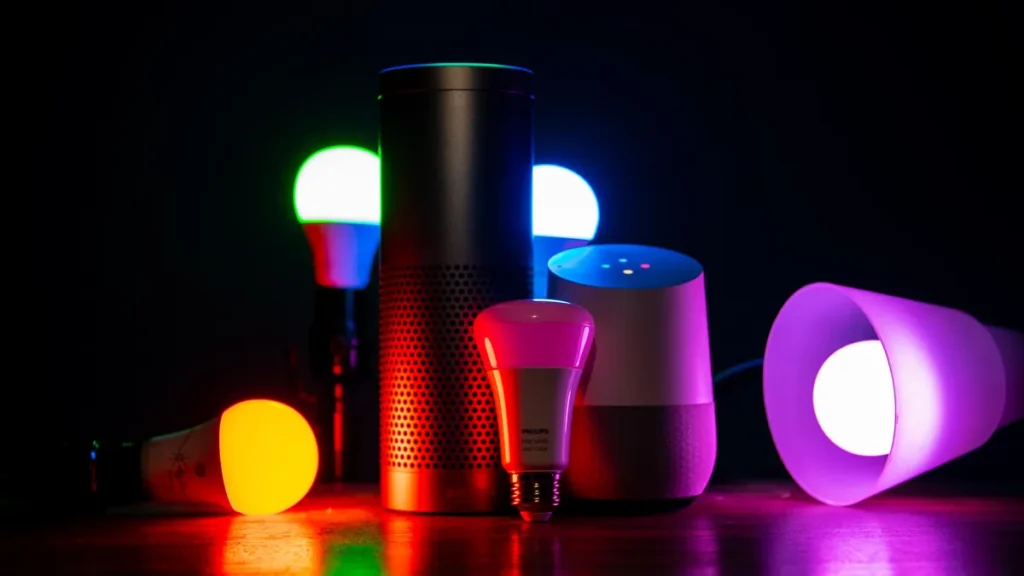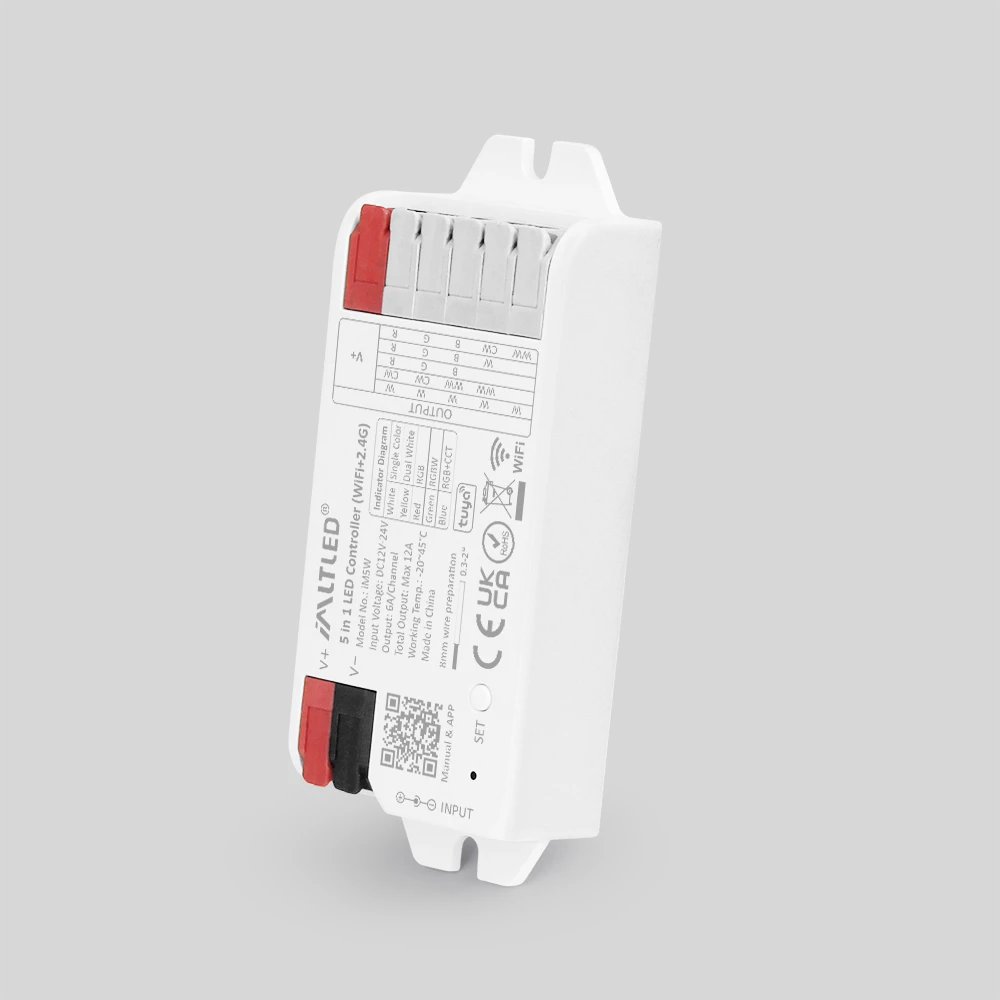In recent years, the Internet of Things (IoT) has revolutionized the way we interact with devices and environments. Among various enabling technologies, Bluetooth Mesh has emerged as a powerful wireless communication protocol designed to support large-scale device networks. This blog post aims to provide a comprehensive overview of the Bluetooth Mesh protocol and explore its significant applications, particularly in the field of smart lighting.
What is Bluetooth Mesh Protocol?
Bluetooth Mesh is a standardized wireless communication protocol developed by the Bluetooth Special Interest Group (Bluetooth SIG) to extend the capabilities of classic Bluetooth Low Energy (BLE) beyond point-to-point or star network configurations. Unlike traditional BLE, which typically supports direct connections between devices, Bluetooth Mesh enables many-to-many device communications over a large network of nodes.
Key Characteristics of Bluetooth Mesh:
- Many-to-Many Communication: Devices (nodes) in a Bluetooth Mesh network can relay messages to one another, enabling communication over multiple hops. This creates a wide-reaching, robust network suitable for large installations.
- Low Power Consumption: Built upon BLE, Bluetooth Mesh ensures optimized energy usage, which is critical for battery-powered devices such as sensors and actuators.
- Scalability: Bluetooth Mesh networks can theoretically support thousands of nodes, making it ideal for expansive IoT deployments.
- Reliability and Security: The mesh network uses managed flooding, where messages are broadcast with parameters controlling message retransmission to balance reliability and network load. Furthermore, Bluetooth Mesh incorporates encryption and authentication at the network and application layers to safeguard data integrity and privacy.
- Interoperability: As a standardized protocol, Bluetooth Mesh fosters interoperability among devices from different manufacturers, encouraging an open ecosystem.
Why Bluetooth Mesh for Smart Lighting?
Smart lighting systems have evolved from simple, remote-controlled functionalities to integrated, intelligent networks capable of dynamic control and automation. In smart lighting, the ability to manage numerous fixtures concurrently, ensure responsiveness, and maintain network stability is crucial. Bluetooth Mesh addresses these needs elegantly.
Challenges in Smart Lighting Networks:
- Large Number of Devices: Commercial and industrial lighting setups, such as office buildings or street lighting, often involve hundreds or thousands of lamps. Traditional point-to-point wireless protocols can struggle to handle this density.
- Network Coverage: Wireless signals must reliably reach all fixtures, which may be spread over large or complex indoor and outdoor environments.
- Latency and Responsiveness: Lighting controls often require real-time or near-real-time responsiveness, especially when coordinated effects or safety lighting patterns are involved.
- Energy Efficiency: Many lighting components, including sensors and controllers, need to operate with low power consumption.
Bluetooth Mesh inherently addresses these complexities by enabling a self-healing, scalable, and low-latency network that supports synchronized device control.
Applications of Bluetooth Mesh in Smart Lighting
- Commercial and Office Building Lighting Control
In office environments, lighting systems must dynamically adjust based on occupancy, daylight harvesting, and user preferences. Bluetooth Mesh can connect thousands of luminaires and sensors, facilitating granular control and monitoring.
- Occupancy Sensing Integration: Devices such as motion sensors can communicate seamlessly with lighting fixtures to turn lights on or off automatically, enhancing both convenience and energy savings.
- Scene Setting and Zoning: Bluetooth Mesh supports complex scene configurations allowing different zones to be adjusted independently or synchronously, providing ambiance customization.
- Energy Management: Real-time feedback on energy usage helps facilities managers optimize consumption and prolong fixture lifespan.
- Street Lighting and Outdoor Applications
Outdoor lighting networks pose unique challenges, including extended distances and harsh conditions.
- Wide Area Coverage: Bluetooth Mesh’s multi-hop communication ensures signals reach all streetlights without requiring expensive repeaters or gateways.
- Remote Monitoring and Control: Maintenance teams can remotely identify faulty fixtures, adjust lighting schedules, and reduce unnecessary energy consumption.
- Adaptive Lighting: Using environmental sensors, streetlights can dim or brighten based on weather conditions or pedestrian presence, enhancing safety and sustainability.
- Residential Smart Lighting
While home automation often involves smaller networks, Bluetooth Mesh provides benefits in larger residential complexes or smart home ecosystems.
- Deferred Installation Complexity: Since Bluetooth Mesh is compatible with standard BLE radios, new smart bulbs or sensors can integrate seamlessly with existing devices.
- Enhanced User Experience: Users can control entire home lighting networks from a smartphone app or voice assistant with reliable connectivity throughout the residence.
- Scalability for Future Expansion: Homeowners can easily add more lighting zones or automate features as their needs evolve.
- Retail and Hospitality Environments
In retail stores, hotels, and restaurants, lighting plays a critical role in ambiance and customer experience.
- Personalized Lighting Experiences: Bluetooth Mesh enables location-based lighting cues and automated transitions to match store layouts or event themes.
- Efficient Maintenance: Facility managers receive alerts for bulbs requiring replacement or adjustment, reducing downtime and operational costs.
- Integration with Other Building Systems: Lighting can interoperate with HVAC, security, and audio systems through IoT frameworks built on Bluetooth Mesh.
Advantages of Bluetooth Mesh Over Alternative Protocols
Compared to other wireless protocols such as Zigbee, Z-Wave, or Wi-Fi, Bluetooth Mesh offers several distinct advantages:
- Integration with Existing BLE Ecosystem: Devices with BLE radios can support Bluetooth Mesh software upgrades, reducing hardware costs.
- Ubiquity and Familiarity: Bluetooth technology is widely supported on smartphones and tablets, enabling direct user interaction without specialized gateways or hubs.
- Security Model: Bluetooth Mesh enforces mandatory encryption and authentication, often more rigorous than alternative protocols.
- Strong Industry Support: Bluetooth SIG continues active development and updates to the mesh specification, ensuring future compatibility and feature enhancements.
Conclusion
Bluetooth Mesh protocol represents a significant advancement in wireless networking for IoT, particularly in smart lighting applications. Its ability to create scalable, robust, and secure many-to-many networks provides an efficient solution for managing complex lighting systems in commercial, industrial, residential, and outdoor environments.
As smart lighting becomes integral to smart cities, sustainable buildings, and connected homes, Bluetooth Mesh stands out as a leading technology to enable seamless, energy-efficient, and user-friendly lighting control networks. For manufacturers and system integrators, adopting Bluetooth Mesh can unlock new possibilities in innovation and customer value.
Further Reading and Resources
- Bluetooth SIG official Bluetooth Mesh specification: bluetooth.com
- Smart lighting case studies utilizing Bluetooth Mesh
- Comparative analysis of wireless protocols for IoT lighting applications
By understanding the capabilities and benefits of Bluetooth Mesh, lighting professionals, architects, and IoT developers can design smarter, more flexible, and future-ready lighting systems. The era of intelligent illumination is here, powered by the elegance and efficiency of Bluetooth Mesh networks.

